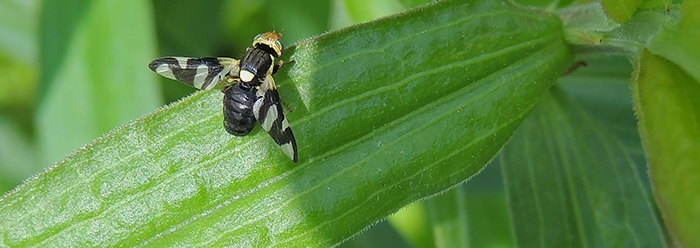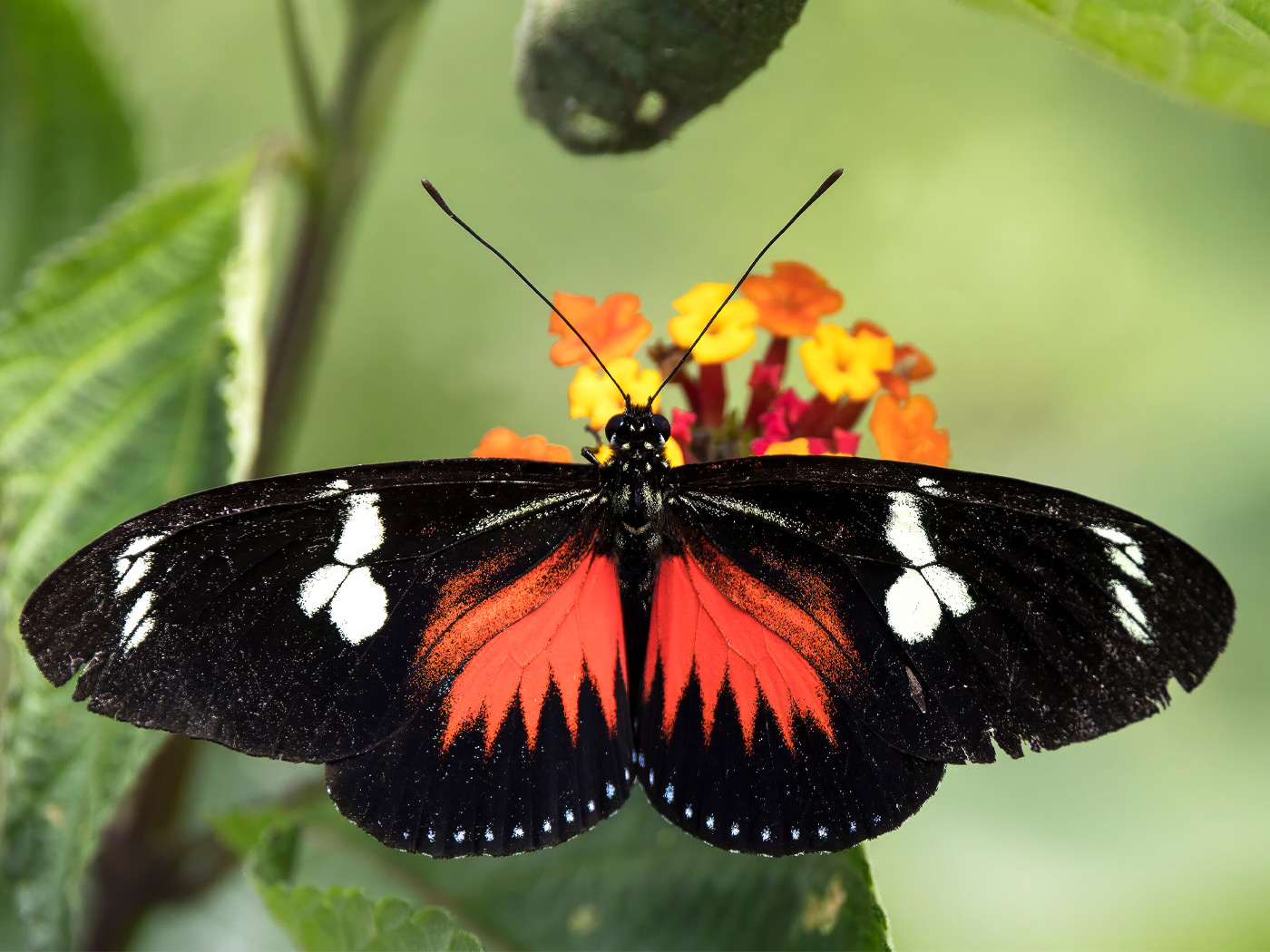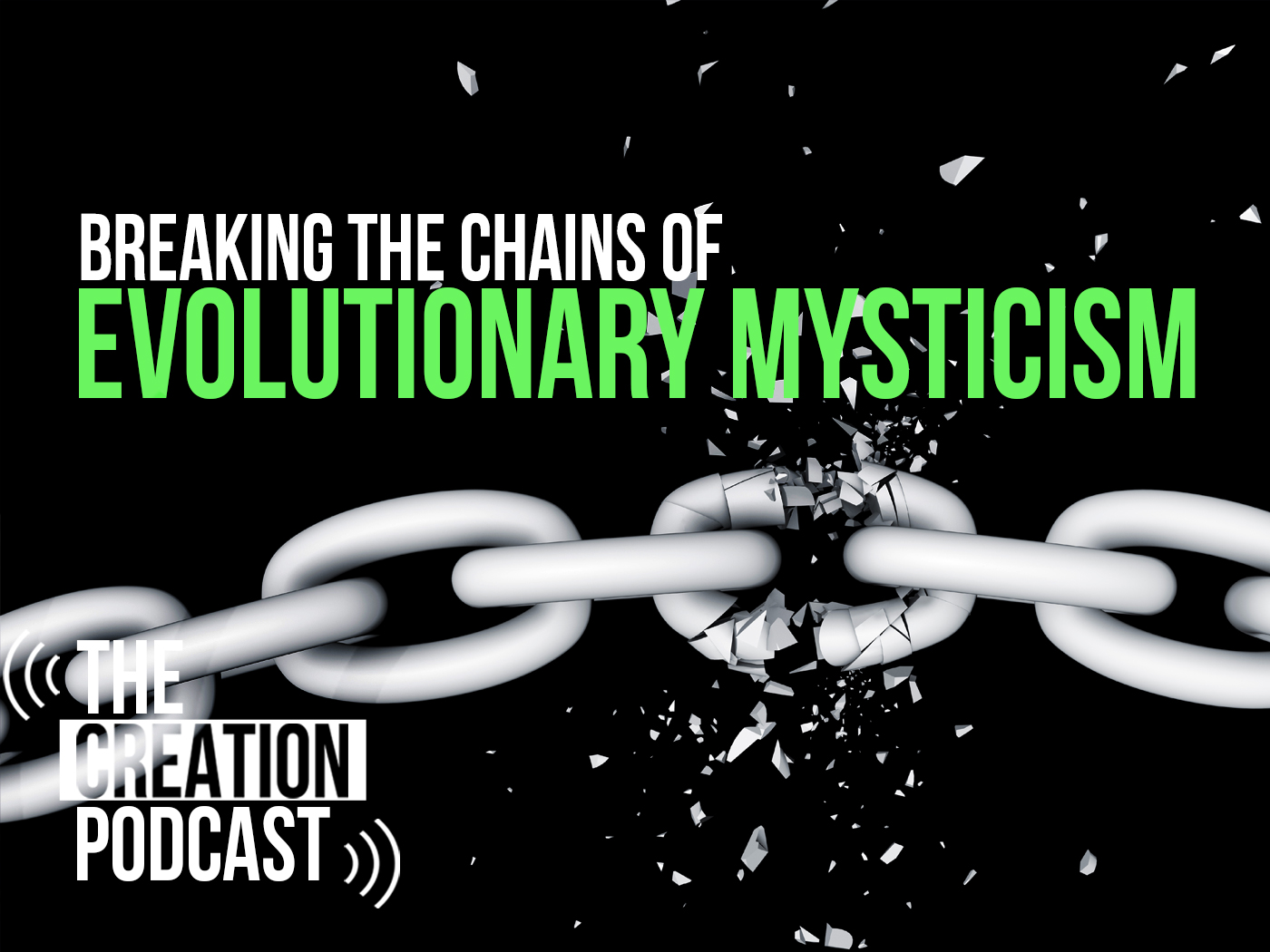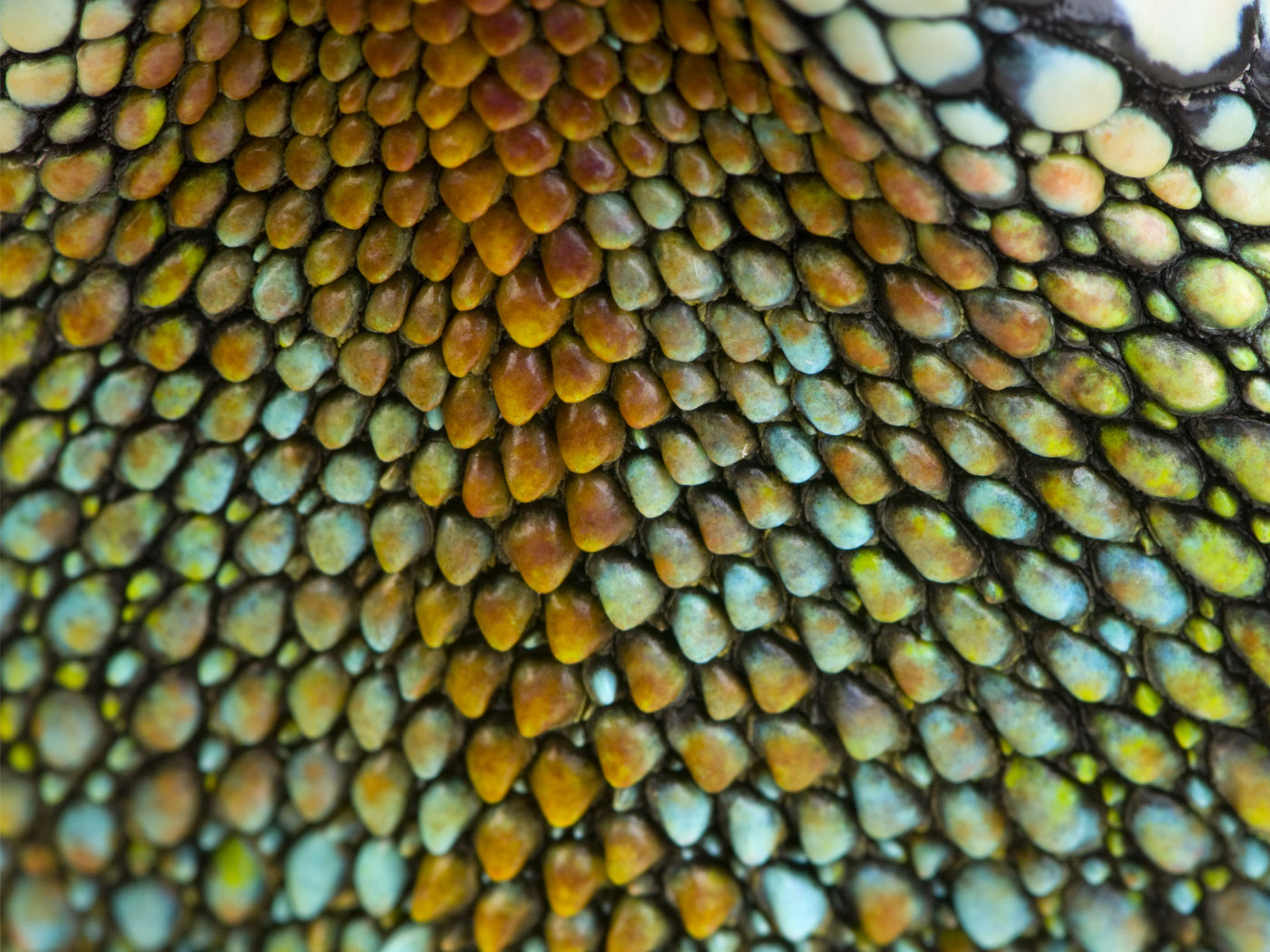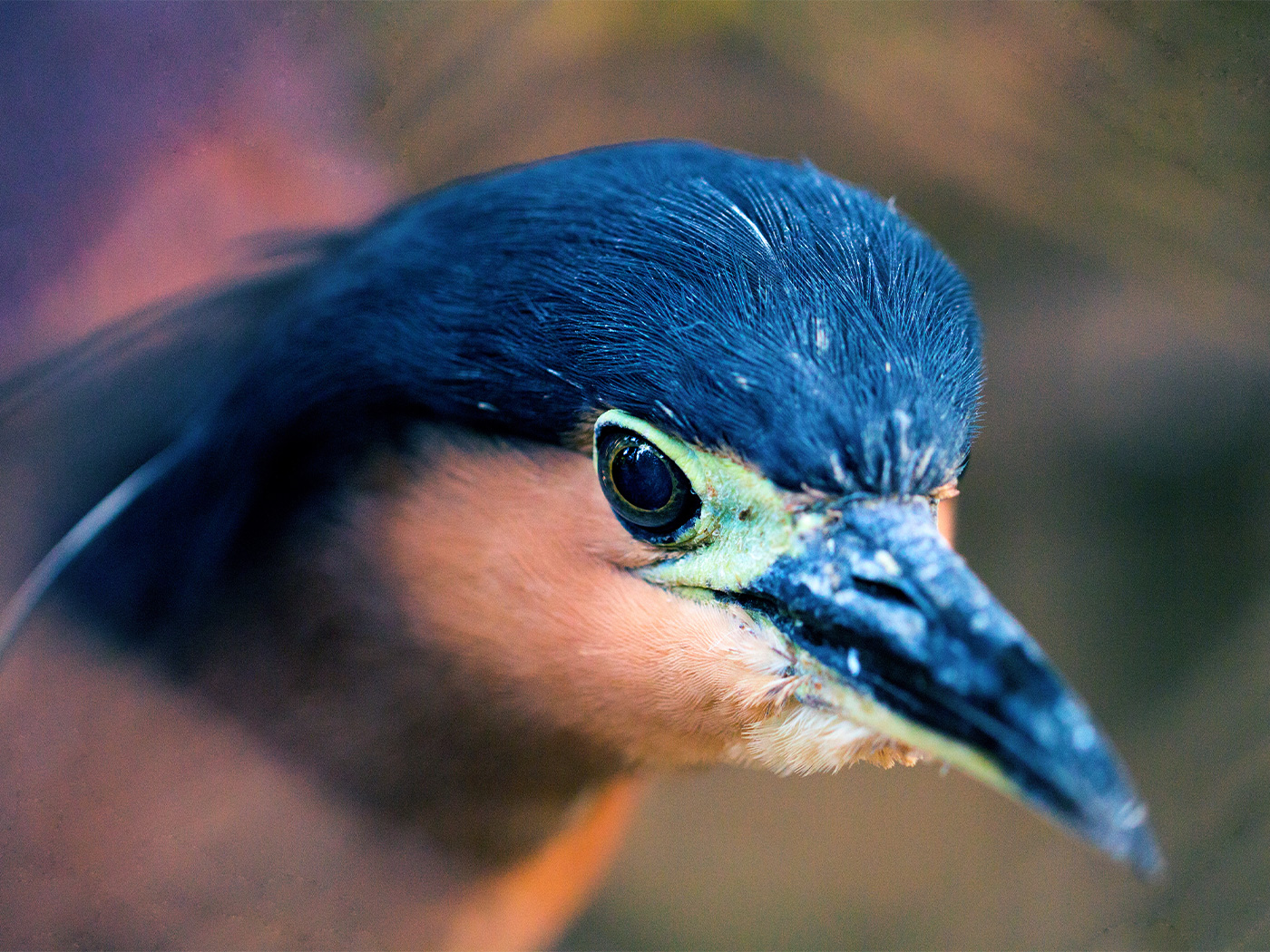Recent studies describing sophisticated plant traits, and some of the insects that feed on those plants, highlight once again how biology may be interpreted very differently. But usually, these interpretations are largely dependent on a researcher’s preexisting beliefs about the origins of living things.
A postdoctoral fellow in entomology at Pennsylvania State University, Anjel Helms, and other researchers identified the specific chemical compound emitted by the male goldenrod gall fly (Eurosta solidaginis) that can be detected by goldenrod plants (Solidago altissima).1 To attract female goldenrod gall flies, males emit large amounts of a volatile compound that is primarily a blend of three chemicals. After mating, females lay eggs within the stems of goldenrods that the developing fly larvae eat when they hatch. Infected goldenrod plants subsequently get devoured and produce smaller and fewer seeds, possibly as a result of diverting some of their resources to trap the hungry fly larvae with a protective gall.
Helm’s research documented that goldenrod plants sense the emission of male goldenrod flies. Then the researchers identified the one specific chemical out of the three that goldenrods can detect. After detecting only trace amounts of that fly-emitted chemical, they rapidly increase production of an herbivore-deterring chemical known as jasmonic acid within their own tissues before the fly larvae begin to eat them. However, the researchers didn’t describe how goldenrod plants detect the presence of the chemical emissions.
Evolutionary Bias Constrains Interpretation of Findings
Helm’s meticulous research pinpoints a strikingly close relationship between a plant and an insect, but it doesn’t identify by observation and experimentation how that relationship originated. He falls back on his naturalistic beliefs to frame his observations, interpret facts, and guide his future research.
Closely matching features are caused by the purposeful handiwork of an intelligent Engineer ![]()
The majority of biologists, including Helms, believe that life somehow started solely due to chemistry, and physics and nature molded its diversity through countless death-survival cycles. Supposedly, the complementary traits of plants and certain insects were caused by their “coevolution,” that is, the purposeless outcome of “interactions” through an “evolutionary arms race” over millions of years. Thus, evolutionary theory not only contends that all life descends with modification from a universal common ancestor, but just as importantly, it maintains that the “apparent design” between plant and fly is caused by environmental conditions. Supposedly, these conditions exercise agency to externally shape essentially passive organisms—and the interplay of these conditions somehow act as a substitute intelligent agent.2
Throughout the paper Helms asserts that the chemical in male fly emissions induces goldenrods to produce jasmonic acid. Though this claim is consistent with Helm’s Darwinian beliefs, it is a poor scientific conclusion for several reasons.
First, it is false because, as molecular biologist Nelson Cabej notes, this type of “inducement” has never been scientifically documented:
In everyday parlance, environmental stimuli is said to induce or even regulate the expression of specific genes. This notion is so engraved in the biological conceptual system that it comes as a revelation when, upon closer scrutiny, it turns out that no external stimuli that could directly induce the expression of any gene are known. No biotic or abiotic agent per se (the viruses’ case is irrelevant) is capable of inducing expression of any gene.3
In addition, Helm’s explanation overlooks all of the goldenrod’s internal chemical sensors, information-processing mechanisms, and jasmonic acid production systems which effect the plant’s response. Helms also repeatedly labels the identified compound in the fly emission as a “cue” for the goldenrod to initiate preemptive protective actions. However, the other two chemicals in the emission are not “cues.” So there must be some information within the goldenrod that specifies one certain chemical to be a cue and not the others.
The paper discusses chemical sensing mechanisms in general. It notes that some plants and insects utilize similar mechanisms, even though they are in two different kingdoms. Helm’s evolutionary bias appears to constrain his interpretation of how that phenomena emerged,
It has previously been noted that there is substantial overlap among compounds emitted by flowering plants and insects, possibly suggesting that there are few motifs or pathways available for producing volatile signals or that other evolutionary pressures lead disparate organisms to converge on similar mechanisms of semiochemical [chemical message] production and perception.4
Yet, since no one has ever quantified an “evolutionary pressure,” then that claim, and his belief that plants and insects somehow “converge” on the same mechanism, are simply declarations, not scientific conclusions. Both seem to reside only in his imagination and are not rooted in observations.
Research demonstrates a remarkable correspondence in design, purpose, and function ![]()
In a news account discussing Helm’s research, he noted that goldenrods must have a mechanism to sense fly emissions. This “support[s] the idea that there is a tight co-evolutionary relationship between these two species.” In other words, over time, as the fly adapted to take advantage of the plant, the plant adapted to protect itself from the fly.5 The tight relationship is evident, but the “co-evolutionary” assertion could be an imaginary scenario.
However, the same week this research came out another paper reporting on similar plant-herbivore relations had actual data leading this team of scientists to say “we hypothesize that herbivores may not show coevolutionary adaptations, but instead ‘chase’ hosts based on the herbivore’s own traits at the time that they encounter a new host, a pattern more consistent with resource tracking than with the arms-race model of coevolution.”6 This is an instance where an explanation based on actual data is a useful replacement to the concocted placeholder “co-evolution” explanation.
Continuous Environmental Tracking May Explain the Observations
Other biologists believe these highly complex, closely matching features are caused by the purposeful handiwork of an intelligent Engineer, since research demonstrates a remarkable correspondence in design, purpose, and function between their traits and similar devices produced by human engineers.7
Recently, a design-based, organism-focused explanation for these types of traits has been introduced. It proposes that organisms use their internal systems of input sensors, logic mechanisms, and programmed output responses to continuously track environmental changes and self-adjust accordingly.8 The traits described for the goldenrod plant and the goldenrod gall fly, especially an herbivore’s ability to track resources via its own traits, seem to fit this explanation. Adaptability is seen as a function of an organism’s internal capacity enabling adaptations which range from rapid physiological adjustments to multi-generational.
The “tight relationship between these two species” expresses the wisdom of the Lord Jesus. ![]()
The “tight relationship between these two species” expresses the wisdom of the Lord Jesus. He thoroughly understands how each functions individually, and coordinated them to work together.
References
- Helms, A. M. et al. 2017. Identification of an insect-produced olfactory cue that primes plant defenses. Nature Communications. 8: 337. doi:10.1038/s41467-017-00335-8.
- Guliuzza, R. J. 2017. Adaptability via Nature or Design? What Evolutionists Say. Acts & Facts. 46 (9): 17-19.
- Cabej, N. R. 2013. Building the Most Complex Structure on Earth: An Epigenetic Narrative of Development and Evolution of Animals. New York, NY: Elsevier Publishing, 199.
- Helms, 6.
- Penn State. Plant ‘smells’ insect foe, initiates defense. ScienceDaily. Posted on sciencedaily.com August 24, 2017, accessed August 28, 2017.
- Endara, M. et al. 2017. Coevolutionary arms race versus host defense chase in a tropical herbivore–plant system. Proceedings of the National Academy of Sciences. Published online before print on pnas.org August 21, 2017. doi: 10.1073/pnas.1707727114.
- Guliuzza, R. J. 2017. Engineered Adaptability: Engineering Principles Should Guide Biological Research. Acts & Facts. 46 (7): 17-19.
- Guliuzza, R. J. Adaptability via Nature or Design? What Evolutionists Say.
*Randy Guliuzza is ICR’s National Representative. He earned his M.D. from the University of Minnesota, his Master of Public Health from Harvard University, and served in the U.S. Air Force as 28th Bomb Wing Flight Surgeon and Chief of Aerospace Medicine. He is also a registered Professional Engineer.
Article posted on September 25, 2017.




